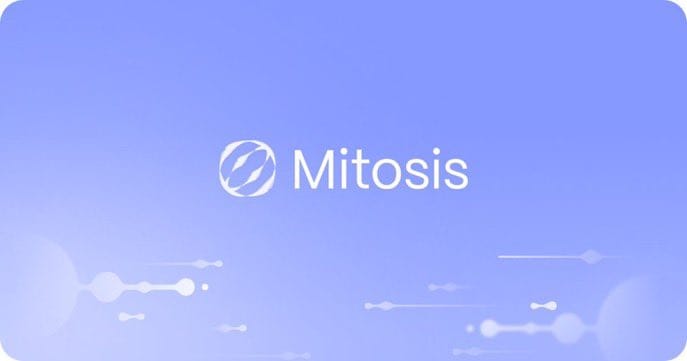Mitosis: Transforming DeFi Liquidity with Cross-Chain Scalability
Introduction
Decentralized Finance (DeFi) has revolutionized access to financial services, but it still grapples with a persistent challenge: liquidity fragmentation. With assets scattered across hundreds of blockchains and thousands of dApps, capital efficiency suffers. However, with Mitosis, a Layer 1 blockchain designed to unify liquidity across ecosystems and usher in a new era of scalable, interoperable DeFi.
What Is Mitosis?
Mitosis is a purpose-built blockchain that introduces Ecosystem Owned Liquidity (EOL), a model that replaces mercenary capital with protocol-owned liquidity. It leverages innovations like miAssets, cross-chain vaults, and intent-based execution to create a seamless liquidity layer across multiple chains.
Some Of The Key Features Includes:
- mi Assets: Tokenized representations of assets (e.g., miETH, miUSDC) that are interoperable across chains.
- Vault System: Liquidity vaults that dynamically allocate assets to yield opportunities across ecosystems.
- EOL Model: Protocol-owned liquidity that aligns incentives and reduces reliance on short-term yield farming.
Solving Liquidity Fragmentation
Traditional DeFi protocols often lock assets in isolated ecosystems or rely on brittle bridges. Mitosis flips this model by embedding a liquidity marketplace within each supported network. This allows:
- Assets to be deployed across chains simultaneously.
- Passive LPs to contribute to active liquidity.
- Dynamic reallocation of capital based on market sentiment.
Cross-Chain Scalability in Action
Mitosis uses Hyperlane, a relayer-less messaging protocol, to enable secure and efficient cross-chain communication. This means users can:
- Deposit assets on Ethereum and earn yield on Cosmos.
- Avoid custodial risks and manual bridging.
- Access diverse DeFi strategies from a single interface.
Real-World Utility
Imagine depositing ETH into Mitosis and receiving miETH. That single asset can be:
- Restaked into EigenLayer AVSs.
- Used as collateral on Layer 2 lending protocols.
- Routed into Pendle for fixed yield—all without manual intervention.
Programmable Liquidity with Matrix Vaults
Mitosis’s Matrix Vaults introduce programmable liquidity. Users receive miAssets and maAssets that automatically allocate capital to high-yield protocols like Aave or Osmosis. This simplifies complex strategies and democratizes access to DeFi.
Security and Governance
At the heart of Mitosis is the MITO token, which powers:
- Network security via staking.
- Governance rights for protocol decisions.
- Incentives for liquidity provisioning.
Ecosystem Growth
Mitosis fosters mutually beneficial relationships with:
- Connected chains and asset protocols.
- dApp builders inside and outside its ecosystem.
- Liquidity providers and users.
This synergy drives innovation, bootstraps liquidity for new chains, and enhances asset exchangeability.
Conclusion
Mitosis isn’t just another blockchain, it’s a liquidity operating system for the multi-chain future. By transforming fragmented capital into a unified, programmable force, Mitosis is setting the stage for a more efficient, scalable, and inclusive DeFi landscape.


Comments ()